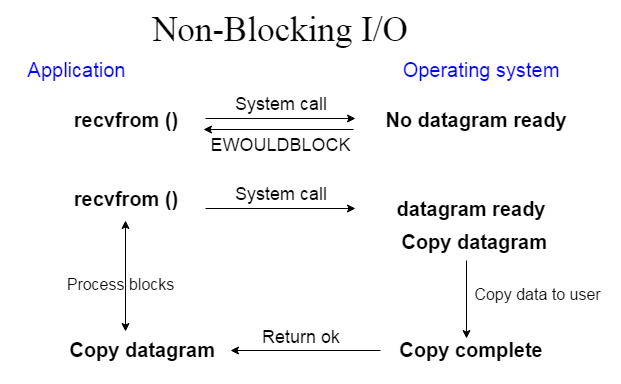Java NIO TutorialJava has provided a second I/O system called NIO (New I/O). Java NIO provides the different way of working with I/O than the standard I/O API's. It is an alternate I/O API for Java (from Java 1.4). It supports a buffer-oriented, channel based approach for I/O operations. With the introduction of JDK 7, the NIO system is expanded, providing the enhanced support for file system features and file-handling. Due to the capabilities supported by the NIO file classes, NIO is widely used in file handling. NIO was developed to allow Java programmers to implement high-speed I/O without using the custom native code. NIO moves the time-taking I/O activities like filling, namely and draining buffers, etc back into the operating system, thus allows for great increase in operational speed. Java NIO fundamental components are given below: 
Let's see the Application and Operating system interface for Non-blocking I/O: 
Next TopicJava NIO Components
|
 For Videos Join Our Youtube Channel: Join Now
For Videos Join Our Youtube Channel: Join Now
Feedback
- Send your Feedback to [email protected]
Help Others, Please Share










